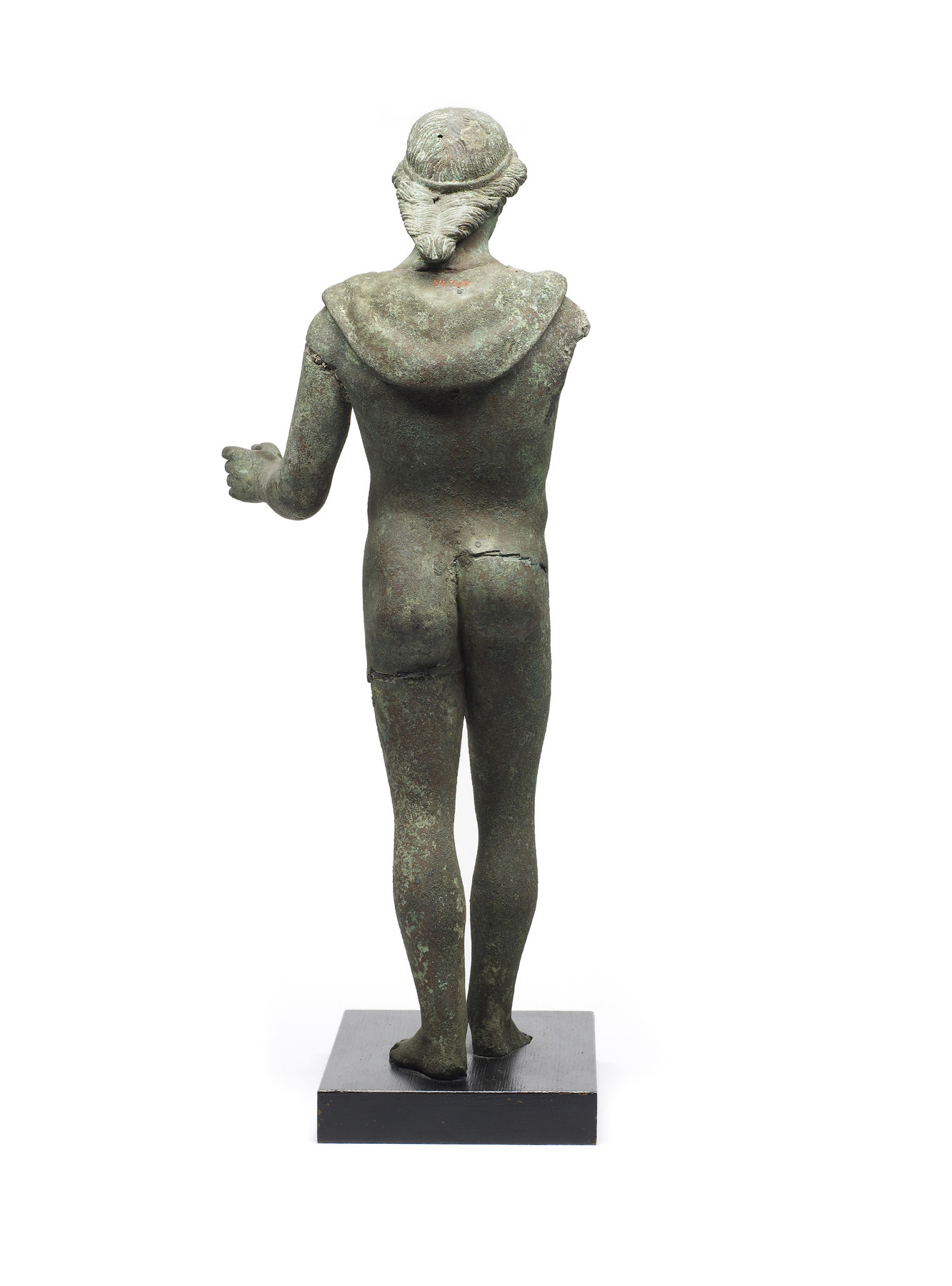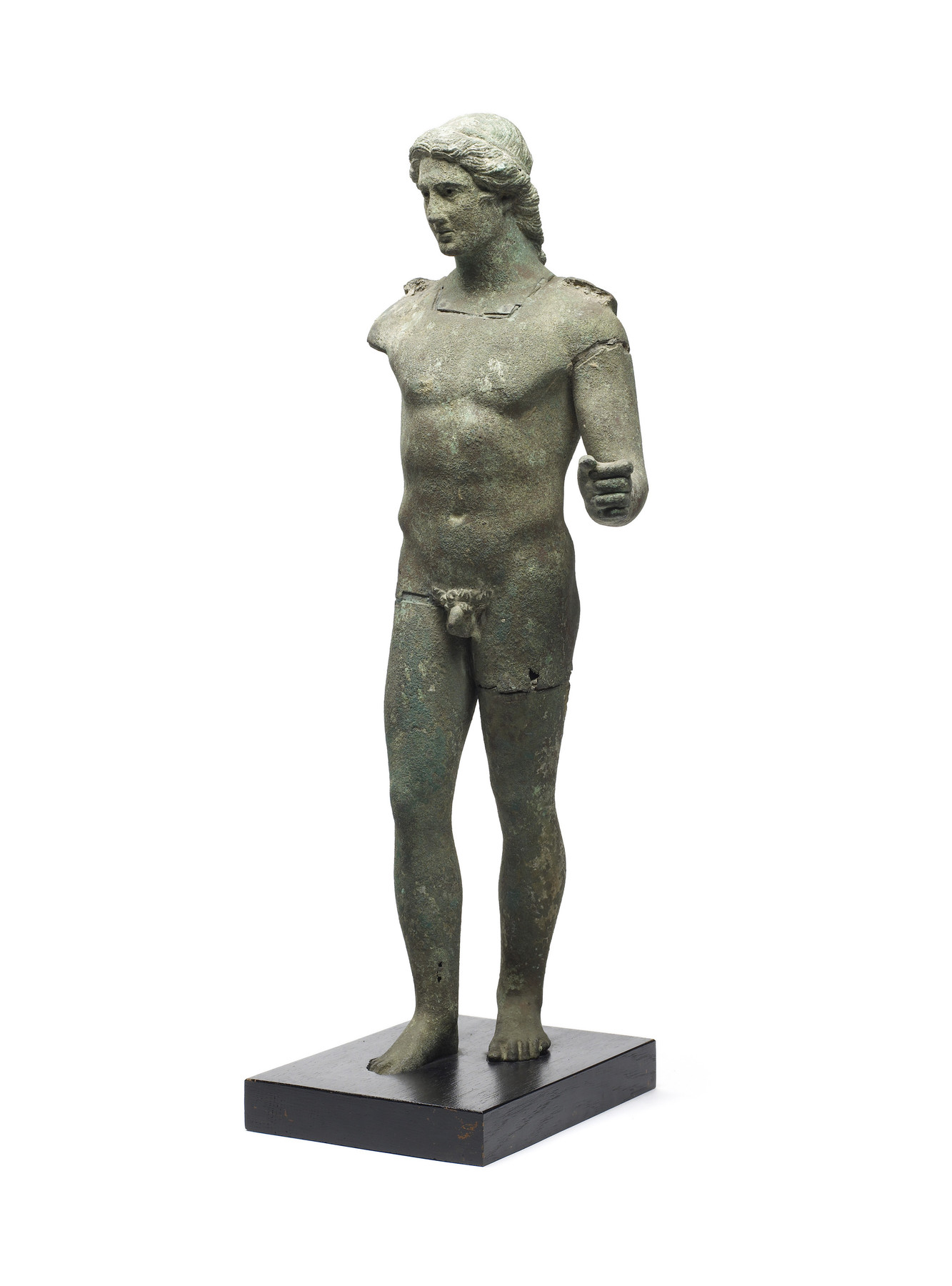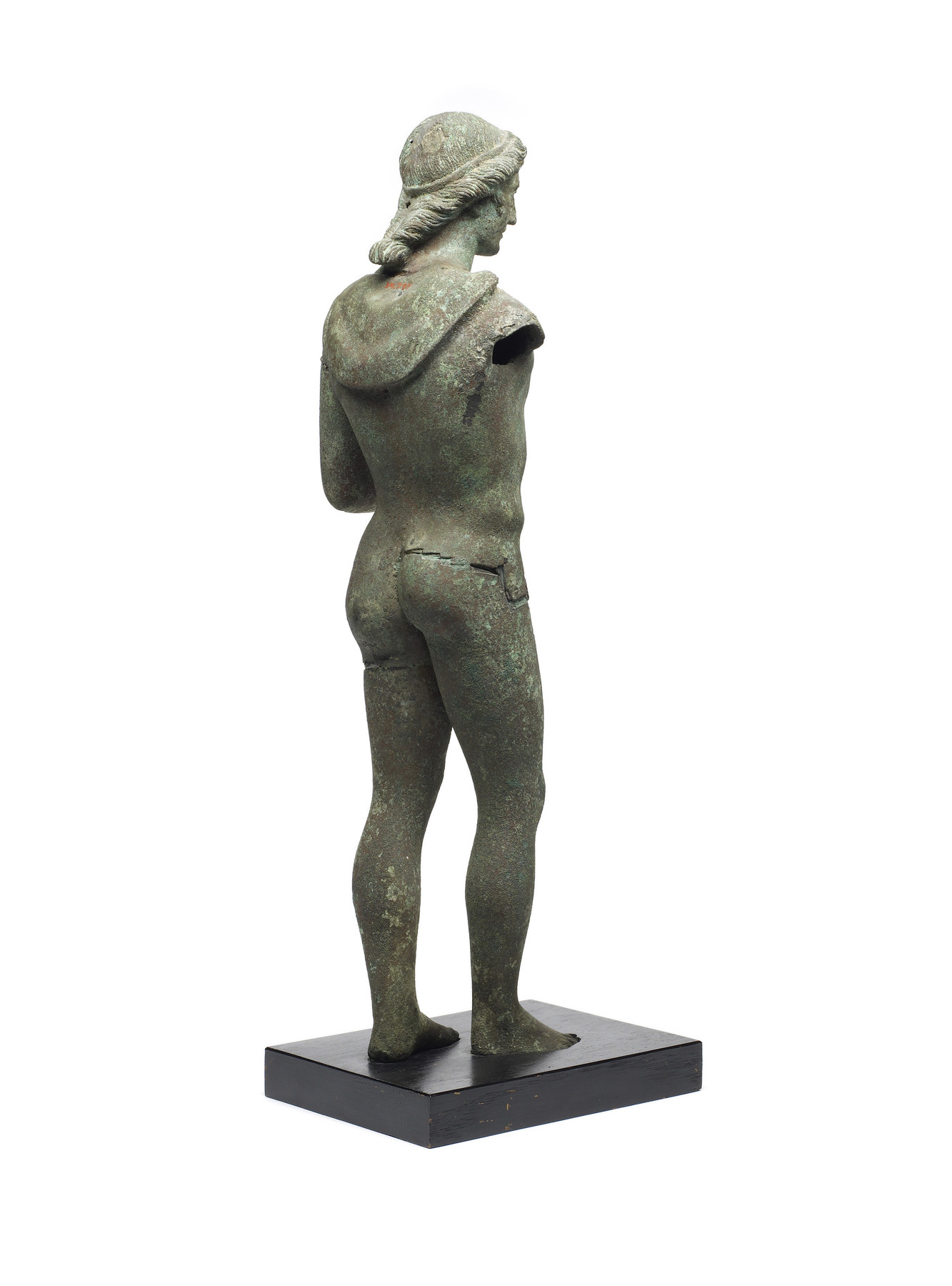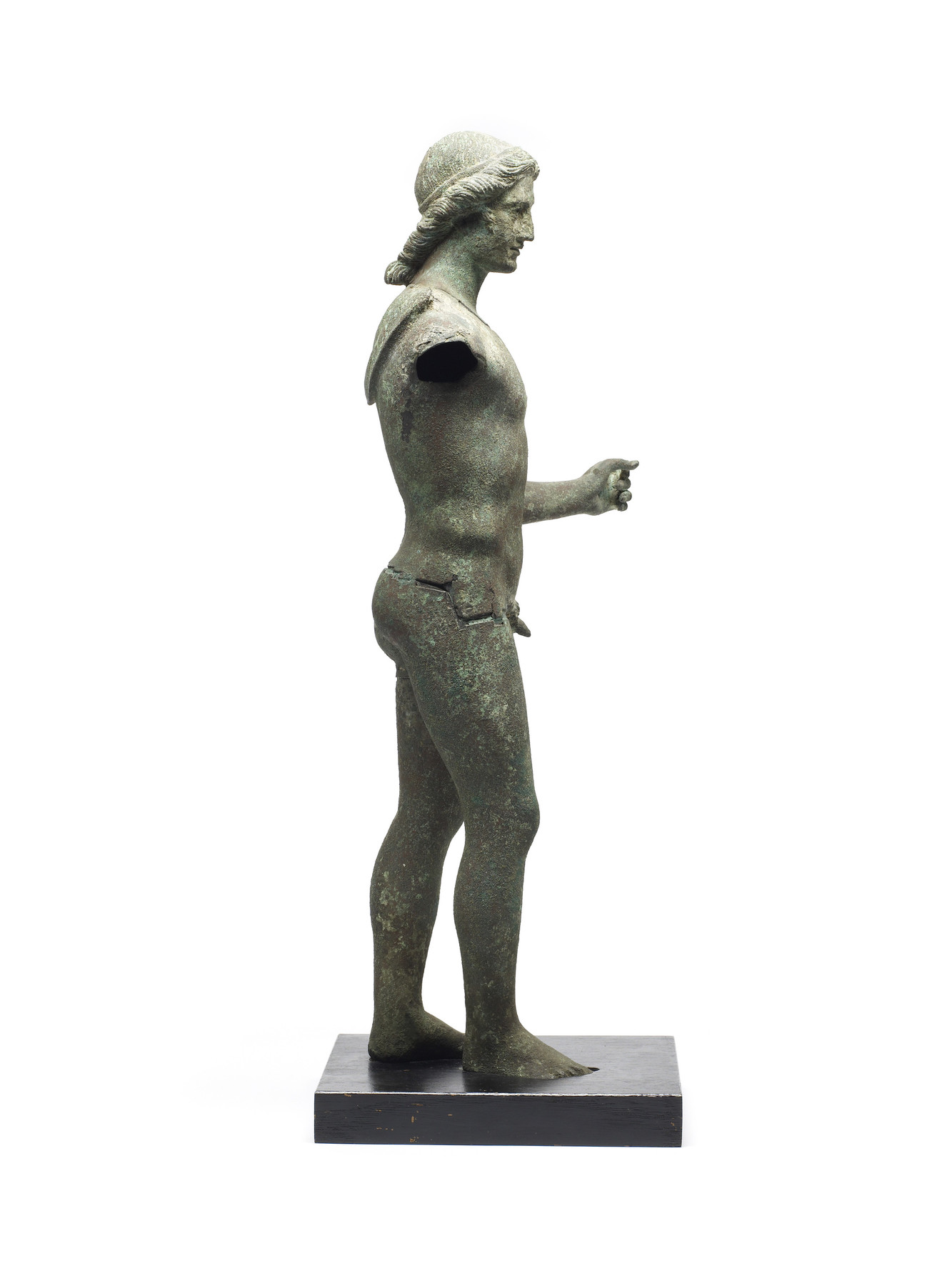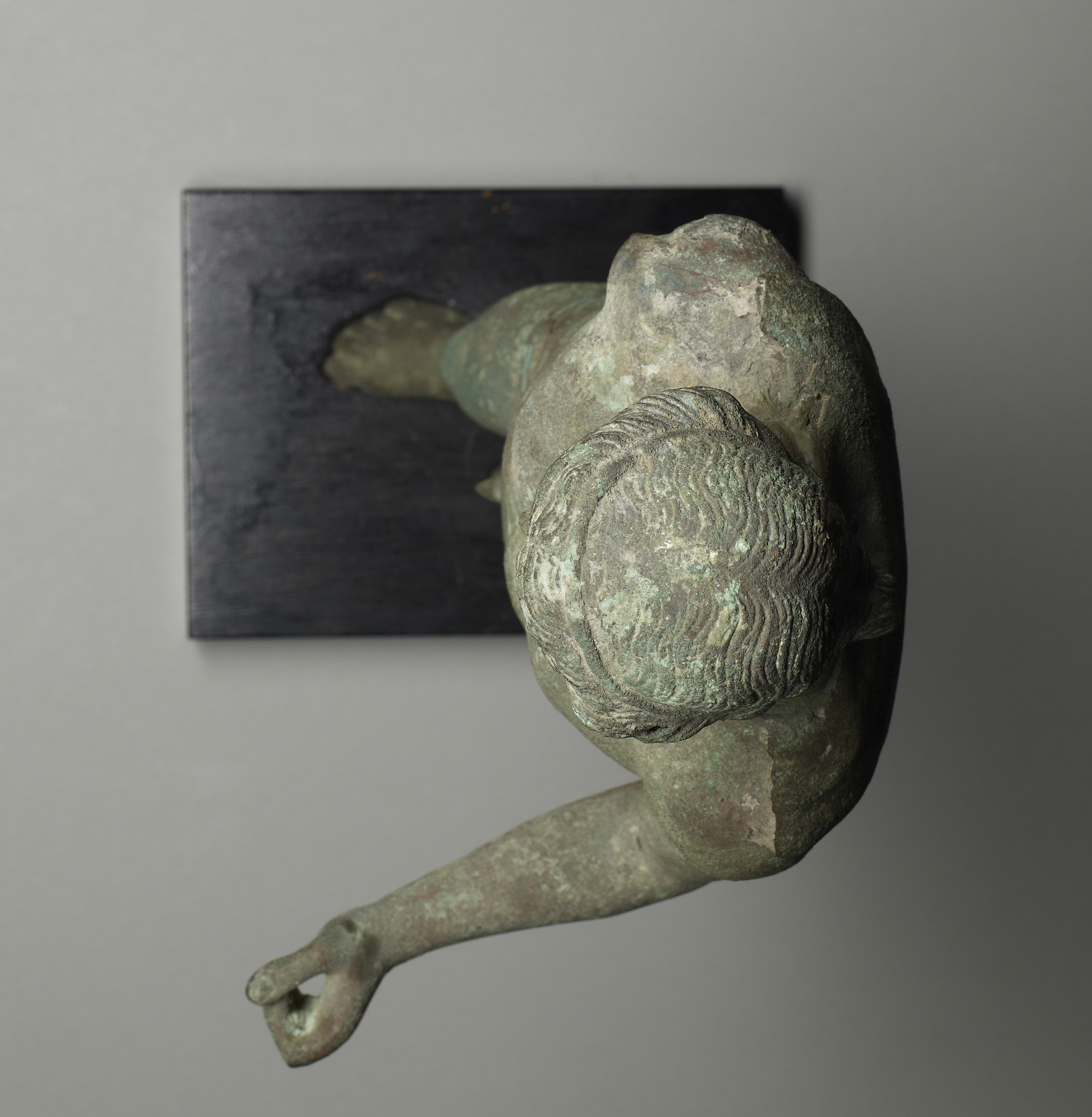Apollo
(Roman Empire )
Apollo stands, head turned slightly to his right, weight on his left foot with right foot advancing. His intact left hand, bent with the forearm held out at waist level, likely held a bow; the hand, especially the thumb, seem relatively large compared to the rest of the arm. He is nude except for the remains of a cloak around his upper back—it may have draped dramatically around his front, like the Apollo Belvedere, or hung in two lengths from his shoulders. His eyes are rather small and pierced. His hair, lacking a diadem, is pulled into a braided roll at the back of his neck. The general stance compares well with the Piombino Apollo, and this piece may have been a decorative object rather than a product for a temple.
Provenance
Provenance (from the French provenir, 'to come from/forth') is the chronology of the ownership, custody, or location of a historical object. Learn more about provenance at the Walters.
Dikran Kelekian, New York and Paris [said to have been found near Ismailia]; Henry Walters, Baltimore, 1913, by purchase; Walters Art Museum, 1931, by bequest.
Conservation
| Date | Description | Narrative |
|---|---|---|
| 11/15/1959 | Examination | survey |
Measurements
H: 22 1/4 × max preserved W: 8 13/16 in. (56.5 × 22.4 cm)
Credit Line
Acquired by Henry Walters, 1913
Location in Museum
Not on view
Accession Number
In libraries, galleries, museums, and archives, an accession number is a unique identifier assigned to each object in the collection.
In libraries, galleries, museums, and archives, an accession number is a unique identifier assigned to each object in the collection.
54.757


